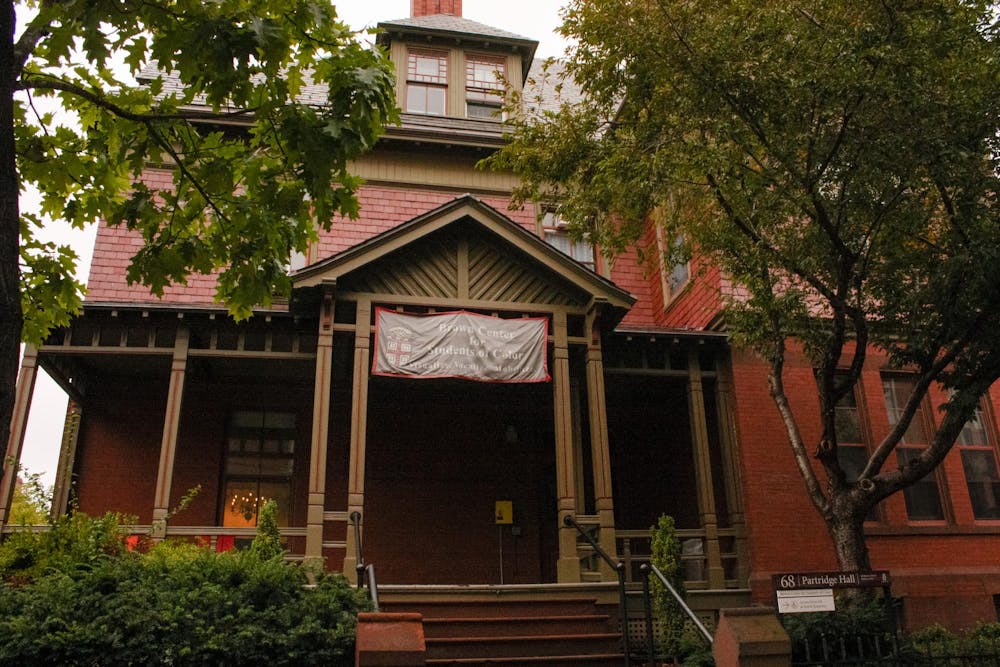The Black Student Union prepared for their annual Black Convocation like always — even the seating layout was identical to previous years. But this year, around half of the seats were empty.
Following the Supreme Court’s ban on race-based affirmative action last year, Black and Hispanic enrollment for Brown’s class of 2028 dropped by 40% and 29%, respectively. Student leaders of affinity groups reckoning with the drop in diversity told The Herald that the decision has significantly impacted recruitment and participation.
“There were faculty who looked at us after and went, wow, the 40% really did make an impact,” BSU President Mya Collins ’25 said.
Fabian Antunez Lopez ’25, co-president of the Latinx Student Union, said that he could “feel and notice the drop in participation” at the Activities Fair, one of LSU’s main recruiting events.
“We had 65 sign-ups this year. Last year, we had 108,” he said. “The ruling felt like such a setback. It made a hard thing harder.”
For Kamryn Walker ’26, co-president of Mosaic+, a program centering underrepresented students in computer science, the Supreme Court decision meant that they were “no longer allowed to ask about race” in their application form.
“Usually, we admit 25-30 people based on race and the size (of the program),” Walker said. This year, no longer able to admit based on race, only 19 students applied and not all were from underrepresented groups. All were admitted.
But the change in demographics will not affect the way Mosaic+ defines its core purpose as supporting underrepresented students of color. “We still want to operate in that way, and that will always be our priority,” Walker said.
“There's a much higher chance that an underrepresented student coming in will not have the CS experience that someone who isn't underrepresented does,” Walker added. “The higher up you get in the CS department, unfortunately, the less diverse it gets. So a lot of it is about trying to find community (early on). It really, really can become essential to have it.”
In light of the Supreme Court decision, Lopez believes that “the community will have to rely more on itself” to build pipelines between affinity groups and increase participation overall. Earlier this semester, LSU hosted their annual Bienvenidos@Brown, a club fair on the main green focused on Latinx student groups.
“You could tell that it was a little empty, (but) the people that showed out and stayed were the underclassmen. They were the freshmen,” he said. “They're a lot more tight knit because there's not many of them here.”
Vincent Harris, associate dean and director of the Brown Center for Students of Color, said that the center is “all in” to support students of color, “regardless of the size” of the community.
“While our approach to supporting students of color and student groups has not fundamentally changed at all, we have become more intentional about strengthening those collaborations,” he said.
In a lunch BCSC leaders organized with Associate Provost for Enrollment and Dean of Undergraduate Admission Logan Powell, student leaders of affinity groups discussed the concrete implications of the Supreme Court decision on admissions and “approaches to improving what was this year’s numbers,” according to Harris.
One idea proposed increasing affinity groups’ involvement in ADOCH to “create a presence of a community of students of color that visiting students can witness,” he added.
Collins highlighted how the decrease in enrollment meant less diversity within the Black student population.
“There’re African students, Black American students and Afro-Caribbean students. There’s always been a very small Black American percentage of Black students at Brown, but the more that you decrease the group, the smaller that gets,” she said.
BSU’s theme for this year is “Rise, Resist, & Reclaim: Advocacy In a New Age,” which honors the 1968 walkouts for increased Black enrollment and the club’s history of activism, Collins said.
“In 1972, we were eight to nine percent (of the student population) and now, in 2024, the incoming class is eight to nine percent Black,” she said. “It’s literally the exact same.”
Elena Jiang is a University News Editor from Shanghai, China concentrating in English Nonfiction and International & Public Affairs.





